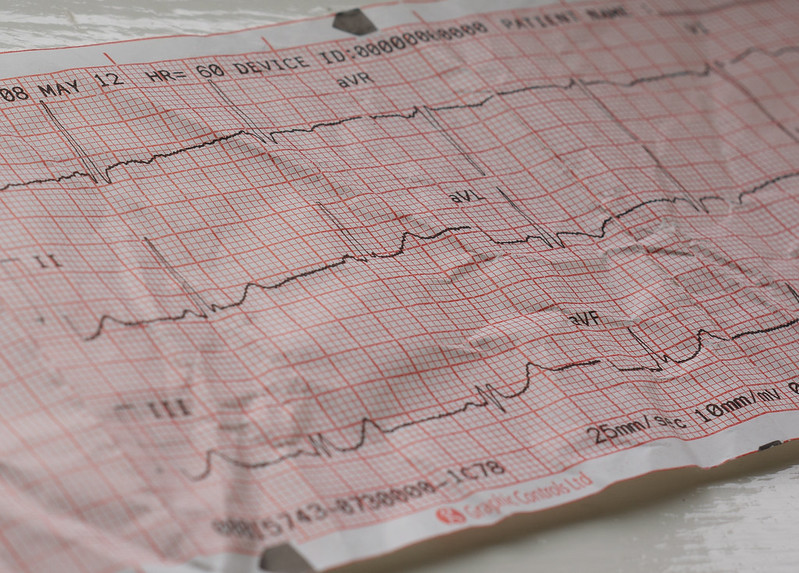BEEEP
The rectangular device’s intrusive, sudden blare triggers a visceral response as I feel the plastic clip vibrate against my hip. I feel my palms flood like a wetland, sweaty fingers crashing against each other like driftwood washing onto shore. My mind wanders for a moment as I notice the reaction I’m experiencing. Accelerated heart rate, perspiration — both downstream effects of the human body’s “fight or flight” response. Of course, I am in no immediate danger. It’s a quiet Tuesday afternoon during my first week on the hematology-oncology service. Yet, my body is priming me for action as I feel the surges of cortisol heighten my senses, all because of that beeping pager.
BEEEEP
I learned how one measures the “loudness” of sounds plenty of times during my physics classes in undergraduate. Normal conversation is about 60 decibels. The sound of an MRI machine is 95 decibels and the sound of a screaming child is roughly 110 decibels. On paper, 130 decibels is the level where sound is considered “painful.”
If you ask anyone how loud is “too loud,” you will receive answers ranging from the chorus of car horns during a work commute to the buzz of a lawn mower too early in the morning. I would argue that between the incessant beeps of monitors and the whir of rolling, wheeled beds, noise in hospitals is something entirely different. I had shadowed in hospitals plenty of times prior to starting medical school, but I realized I never really paid much attention to the pagers everyone carries. Even with the smartphone revolution and the adoption of electronic health records, the anachronistic pager endures. In an age where it’s so easy to share information, one would imagine the pager would be the first device to be swept up by the wave of innovation. As I stand on the catwalk between two wings of the hospital, the pager’s ring may as well measure 130 decibels.
BEEEEEEEP
I receive a few cursory glances from onlookers as I fumble for the plastic “off” button. I might actually be pressing the “menu” button; it is an educated guess at this point. I glance down at the black text across the tiny green screen: “Bmbx samples on Y8 ready.” I was trusted with picking up a bone marrow biopsy sample for a 65-year-old woman with suspected relapse of her acute myeloid leukemia. The samples needed to be brought to two different labs within 30 minutes of collection. As the nurse hands over the samples, I peek towards the patient’s room and see her sitting in a chair against the wall. Her fatigued, bloodshot eyes betray the calm composure that her upright posture and stoic face might suggest. Any thoughts regarding my other tasks or beeping pagers quickly melt away. What is going through her mind? Who was she before this diagnosis? Who will she be now?
As future doctors, we are taught how to offer reassurance to patients in these complex, life-altering situations. It’s a key component of the physician-patient relationship, like a house needs a strong foundation. Without clear communication, the chances of achieving effective medical outcomes can plummet. But by no fault of their own, healthcare workers are incredibly busy and there is pressure to quickly reach the root of the issue when speaking with patients. Especially in oncology, these conversations will never be, and never should be, easy and quick.
For many oncology patients, hearing the term “cancer” heightens a fear of the unknown: a nameless, malignant void that devours all in its path. As physicians, it is our responsibility to understand the disruptions in the mechanisms of cellular replication that lead to cancer and adequately relay that information to patients in a way that replaces the mental image of that void.
I trepidatiously followed the attending into the room as she began to explain bone marrow transplants. She seamlessly described the dynamics of bone marrow and stem cell transplants with an analogy of a queen bee and worker bees in a hive. She described how an allogeneic stem cell transplant would involve an infusion of blood-forming stem cells, the worker bees, from someone other than the patient — a donor whose tissue type closely matches the patient’s. The tissue type, the unique layout of the hive, is based on unique substances on the surface of cells in the body. These differences between the donor and recipient can sometimes cause the body’s immune system to react against the cells. Successful transplantation would require a careful balancing act involving complex chemotherapy regimens to help the bone marrow adjust.If successful, the new worker bees would breathe life back into the bone marrow.
I watched as the patient slowly began to relax, the tension leaving her shoulders as she asked follow-up questions. Not only did the attending explain the function of bone marrow in a comprehensive and comprehensible way, but she set aside the time to fully address — and ease — the patient’s fears.
As the discussion ended, we exchanged goodbyes and filed out of the room. I handed the pager back to the resident as she nodded and said “good job” while reclipping it to her belt. I smiled and nodded back as the pager rang again.
Beep
The sound was not piercing like it was before.
Image credit:”Heart Rate Printout” (CC BY-NC-ND 2.0) by Cross Duck

